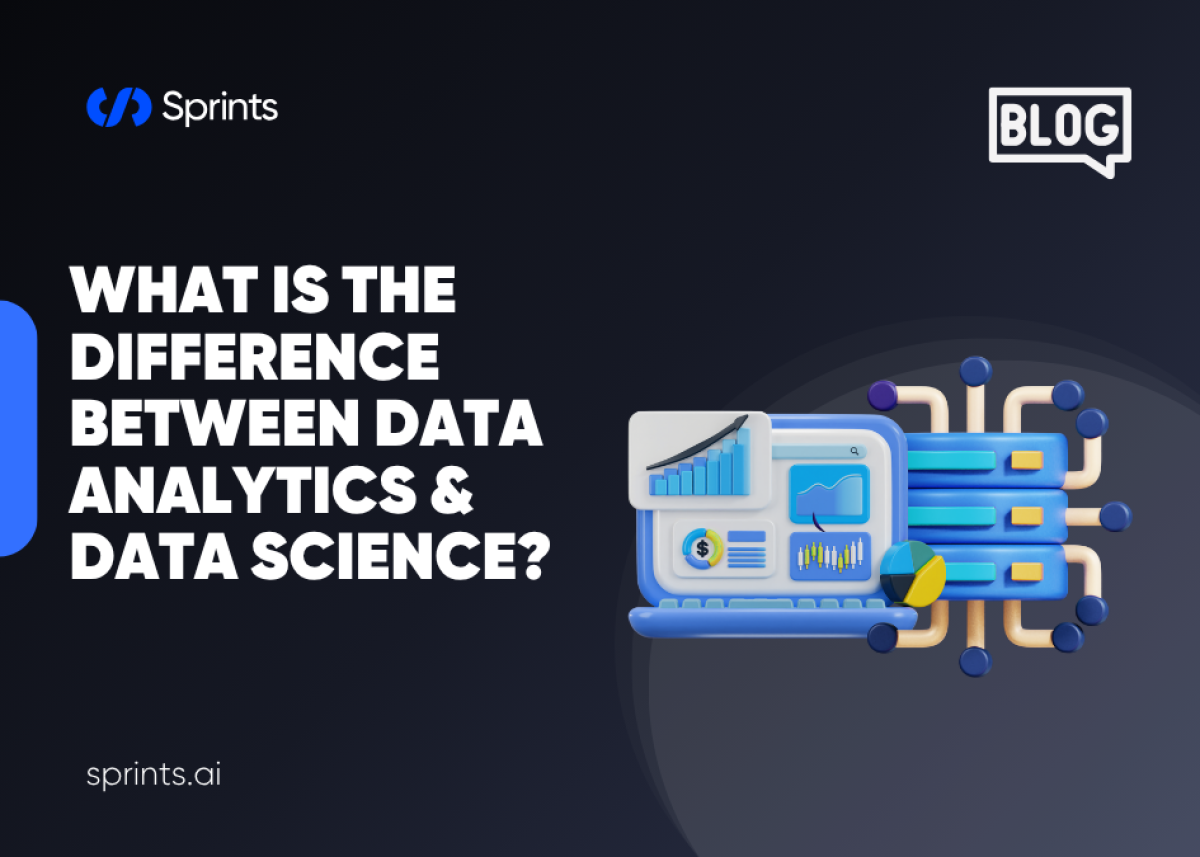
In our increasingly digital world, terms like "data analytics" and "data science" pop up everywhere, often used interchangeably. However, they are distinct fields with unique purposes. Whether you're thinking of diving into a new career or simply aiming to make smarter business decisions, knowing the difference is key. Let’s break down these two exciting fields clearly and easily.
What is Data Analytics?
Data analytics is about looking at historical data to find insights and make informed decisions. Think of data analytics like looking in your rear-view mirror—you're assessing what's already happened.
What Do Data Analysts Do?
Clean and organize data
Perform statistical analysis
Create reports and visualizations
Draw practical insights for immediate use
Real-Life Examples of Data Analytics:
Analyzing monthly sales performance
Understanding customer buying habits
Evaluating marketing campaigns
Businesses rely on analytics to improve their current strategies based on past data.
What is Data Science?
Data science dives deeper. It involves using advanced models, algorithms, and mathematics to predict future trends. Imagine data science like a GPS—it helps you navigate future possibilities and uncertainties.
What Do Data Scientists Do?
Build predictive models
Develop machine learning algorithms
Work with large and complex datasets
Test new ideas and hypotheses
Real-Life Examples of Data Science:
Creating customer segments for targeted marketing
Developing recommendation systems (like Netflix suggestions)
Detecting fraudulent activities automatically
With data science, companies can stay ahead by predicting what’s next.
Data Analytics vs Data Science: Clear Differences
1. Goals
Data Analytics: Understand the past clearly and quickly.
Data Science: Predict future events and uncover hidden patterns.
2. Key Skills
Data Analytics: SQL, Excel, visualization (Tableau, Power BI)
Data Science: Python or R, machine learning, advanced statistics
3. Tools Used
Data Analytics: Excel, SQL databases, visualization tools
Data Science: Python libraries (like Pandas, TensorFlow), big data tools (like Spark, Hadoop)
Careers in Data Analytics and Data Science
Careers in Data Analytics
Data Analyst
Business Intelligence Analyst
Marketing Analyst
These roles usually focus on specific business areas, helping organizations improve efficiency.
Careers in Data Science
Data Scientist
Machine Learning Engineer
AI Specialist
These roles often address broader business challenges, influencing overall strategy through predictive models.
Choosing Your Path: Data Analytics or Data Science?
Deciding between data analytics and data science depends on your personal interests, skills, and career aspirations.
Consider Data Analytics if you:
Prefer structured tasks
Enjoy working directly with clear data
Like clear, actionable insights
Consider Data Science if you:
Enjoy solving complex problems
Love programming and creating algorithms
Thrive in environments that require experimentation
Real-World Insights: Data Analytics and Data Science
Let's look at some practical examples to make things clearer:
How Businesses Use Data Analytics to Make Better Decisions
Companies frequently use data analytics to evaluate customer satisfaction, track sales, and improve operations. For example, retailers analyze seasonal trends to optimize their inventory and marketing.
Why Data Science Matters for Predicting Customer Behavior
Data science techniques allow businesses to anticipate what customers might do next. Companies like Netflix use sophisticated algorithms to recommend content, greatly enhancing user experience.
Getting Started in Data Analytics or Data Science
How to Start in Data Analytics:
Get comfortable with SQL and Excel
Learn visualization tools like Tableau or Power BI
Create projects that demonstrate your analysis skills
How to Start in Data Science:
Learn Python or R
Study machine learning basics
Practice with real-world datasets (e.g., Kaggle competitions)
Common Myths About Data Analytics and Data Science
Myth 1: They Are the Same Thing
In reality, analytics focuses on past events, while data science looks forward to predict outcomes.
Myth 2: Data Science Always Means Big Data
You don’t always need massive datasets. Many successful data science projects use smaller, carefully curated data.
Future Trends: Data Analytics and Data Science
Both fields will continue growing as more industries rely on data-driven decisions.
Upcoming Trends:
Increased automation in analyzing data
Wider use of AI in daily business
Demand for faster, real-time analytics
Wrapping Up
Clearly understanding the differences between data analytics and data science can help you make better career choices or smarter business decisions. Whether you choose analytics for practical insights or data science for predictive power, clarity about each will guide your path.
Have thoughts or experiences you’d like to share? Drop a comment below, or share this article with others who might find it useful. Check out our other articles for more insights into data and technology.



